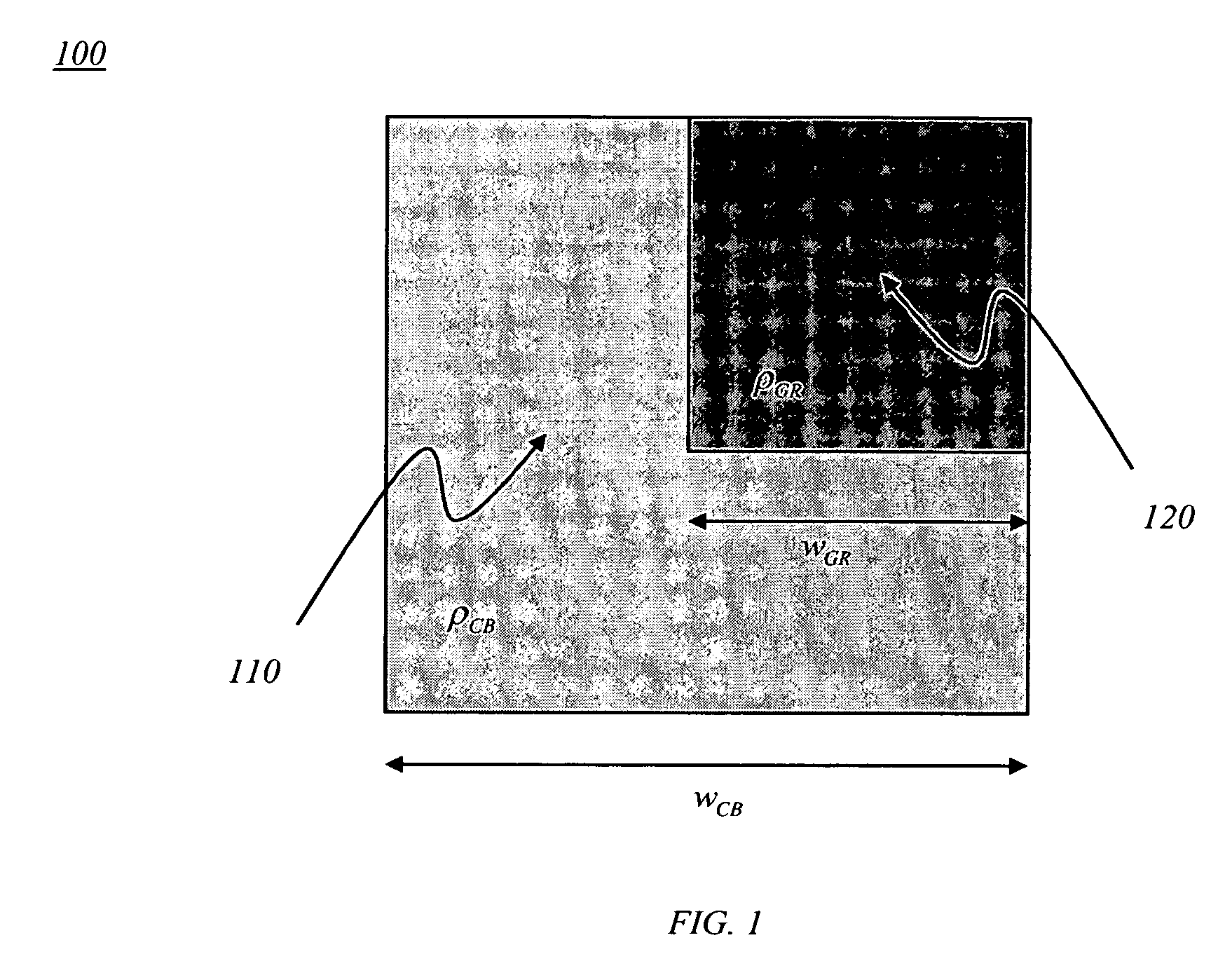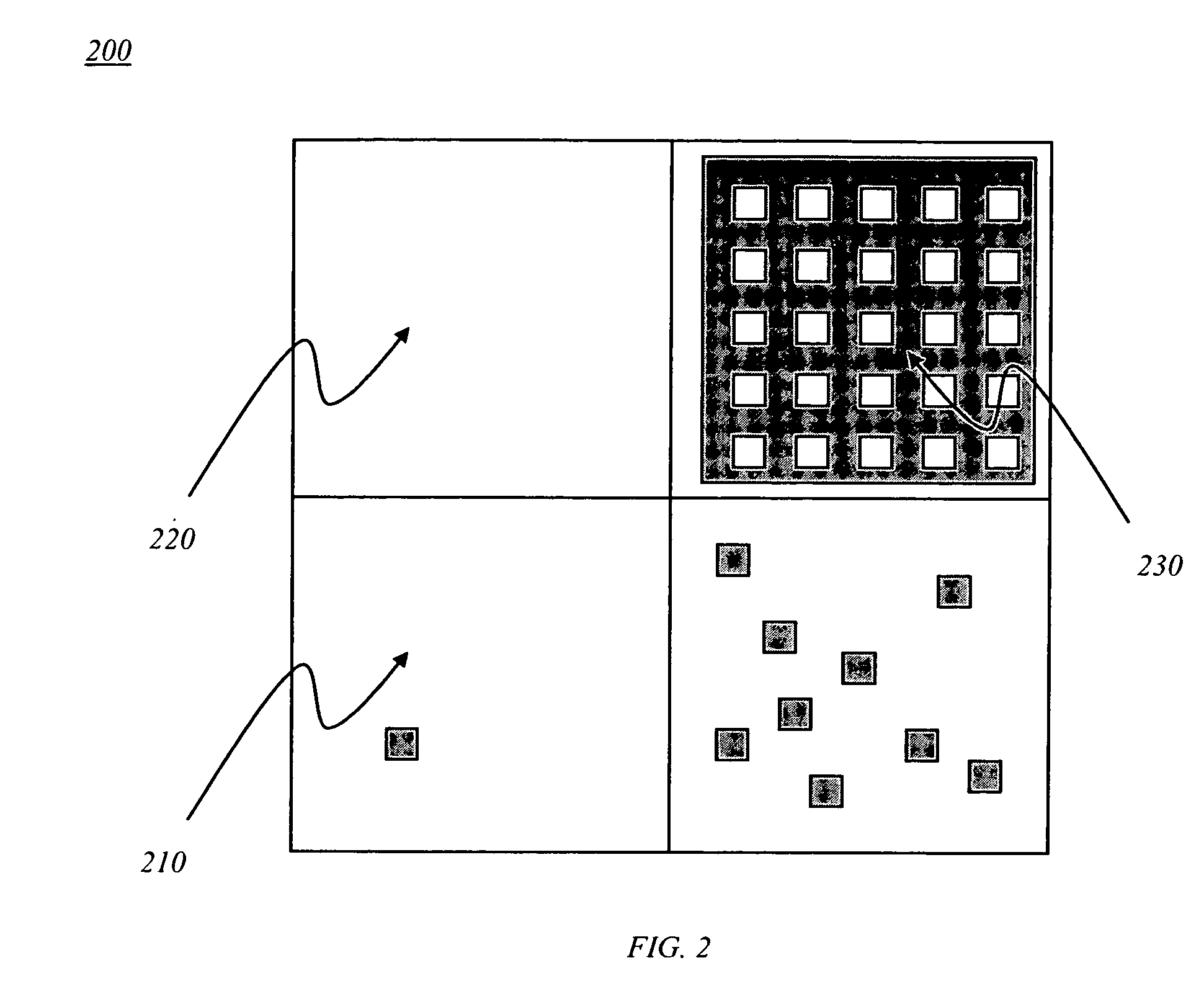Method for checking the pattern density of a semiconductor chip design with variable checking box size and variable stepping distance
a chip design and pattern density technology, applied in the field of semiconductor wafer design and manufacturing, can solve the problems of increasing the number of manufacturing errors, increasing the difficulty and constraining of larger process windows, and reducing the number of checking boxes. the effect of reducing the size of the checking box
- Summary
- Abstract
- Description
- Claims
- Application Information
AI Technical Summary
Benefits of technology
Problems solved by technology
Method used
Image
Examples
Embodiment Construction
[0031] For the purposes of the present description, there will be a focus on a groundrule mandated local pattern density maximum. The same concepts may also be applied to a pattern density minimum by one skilled in the art.
[0032] Local pattern density is defined as the amount of pattern within a checking box of a size specified by the same groundrule. For example, a groundrule may specify that the maximum pattern density in a chip is 50% within a checking box of 20 μm per edge. In this example, a design in which a 20 μm×20 μm box can be placed and contain more than 200 μm2 of pattern is considered to fail because the density of pattern is greater than 50%.
[0033] The inventive method requires that the area of the pattern density of the entire chip must be found. Based on the pattern density one can pass the entire chip, fail the entire chip, or decide that it must be analyzed in smaller areas. This will become more understandable when looking at extreme cases. If the entire design ...
PUM
 Login to view more
Login to view more Abstract
Description
Claims
Application Information
 Login to view more
Login to view more - R&D Engineer
- R&D Manager
- IP Professional
- Industry Leading Data Capabilities
- Powerful AI technology
- Patent DNA Extraction
Browse by: Latest US Patents, China's latest patents, Technical Efficacy Thesaurus, Application Domain, Technology Topic.
© 2024 PatSnap. All rights reserved.Legal|Privacy policy|Modern Slavery Act Transparency Statement|Sitemap



